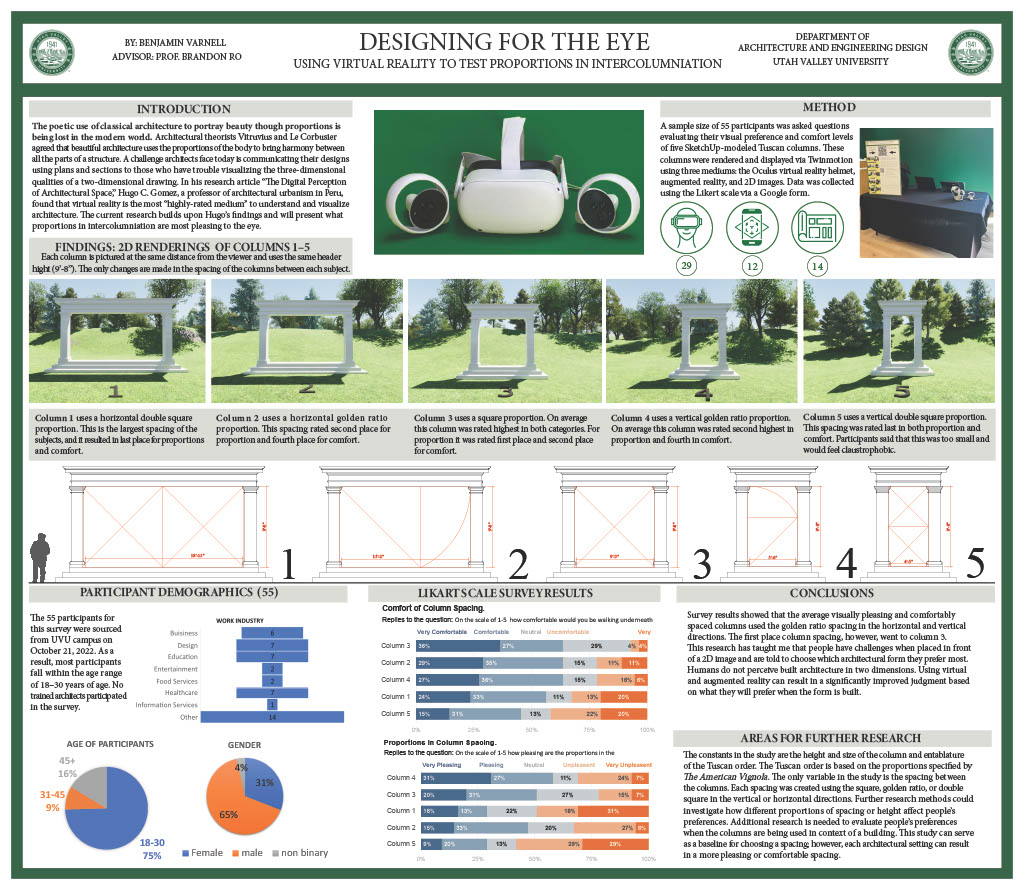Presenter Name: Ben Varnell
Description
The poetic use of classical architecture to portray beauty though proportions is being lost in the modern world. Architectural theorists, Vitruvius and Le Corbusier, agreed that beautiful architecture uses the proportions of the body to bring harmony between all the parts of a structure. A challenge architects face today is communicating their designs using plans and sections to those who have trouble visualizing the three-dimensional qualities of two-dimensional drawing. In his research article "The Digital Perception of Architectural Space," Hugo C. Gomez, a professor of architectural urbanism in Peru, found that virtual reality is the most "highly-rated medium" to understand and visualize architecture. The current research builds upon Hugo's findings and will present what proportions in intercolumniation are most pleasing to the eye by utilizing three mediums to collect data: three-dimensional virtual reality environment, 360 augmented reality images, and two-dimensional images. Participants in the survey were asked questions evaluating their visual preference and comfort levels of five SketchUp-modeled Tuscan columns. These columns were rendered and displayed in the virtual reality helmet using the software Twinmotion. The sample size of this survey comprises 55 non-architects who are untrained in the classical rules of proportion. Data was collected using the Likert scale via a google form. The constants in the study are the height and size of the column and entablature of the Tuscan order and are based on the proportions specified by The American Vignola. The variable in the study is the spacing between the columns. Each spacing was created using the square, golden ratio, or double square in the vertical or horizontal directions. Survey results showed that the most visually pleasing and comfortably spaced columns used the golden ration spacing in the horizontal and vertical directions. Further research methods could entail the use of other classical orders or a comparison of modern and classical designs.
University / Institution: Utah Valley University
Type: Poster
Format: In Person
Presentation #A2
SESSION A (9:00-10:30AM)
Area of Research: Architecture
Email: 10745229@uvu.edu
Faculty Mentor: Brandon Ro

